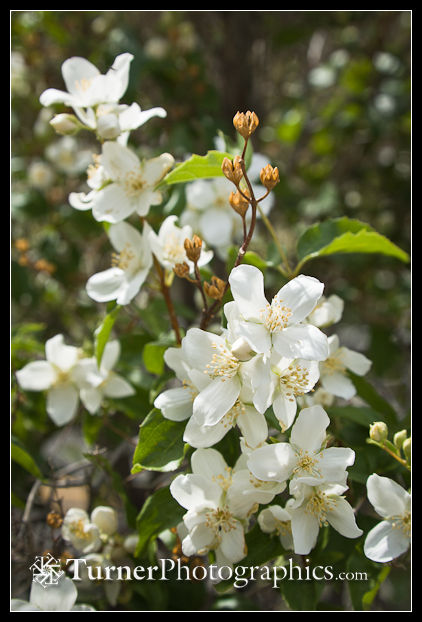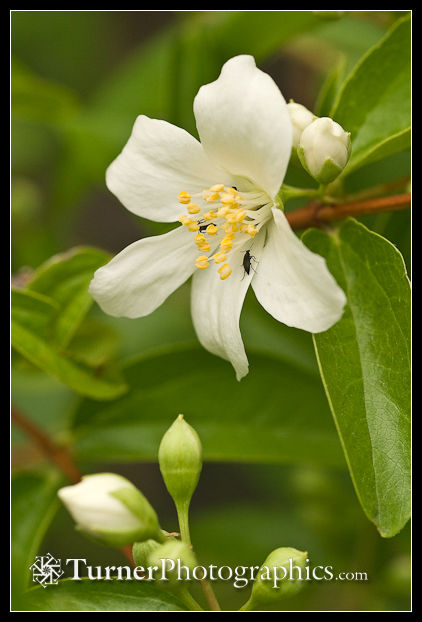Plant of the Month: Lewis’s Mock-orange

Lewis’s mock-orange, Philadelphus lewisii, is an exceptionally fragrant shrub that’s native to a wide swath of western North America from Montana and British Columbia to California. It’s more common on the dry side of the mountains, but is found in 38 of Washington’s 39 counties and 35 of 36 in Oregon.
The fragrance is heady, sweet, and pleasant but not overpowering. I’ve driven through some of eastern Washington’s narrow canyons when it’s in bloom and inhaled deeply of the fragrance without ever stopping my truck. Mock-orange grows in full sun, often on rocky soil where it is able to send its roots deep into the cool cracks where moisture lingers. In this sunny habitat it is often a well-shaped, vigorous shrub. In western Washington I’ve seen it in shadier forest sites, stretching up toward holes in the canopy.

Mock-orange was in full bloom the last week of June and will likely continue blooming for another week or so. Each brilliant inch-wide white blossom has 4 or sometimes 5 petals. They’re clustered at the ends of the stems.

Come October the leaves turn a nice shade of golden yellow before falling and leaving bare branches through the winter months.

Lewis’s Mock-orange makes a fine garden shrub, reportedly hardy in USDA zones 5-8. There are many species and hybrid mock-oranges available to gardeners, but if you live within the range of our native species why not plant it instead of the more commonly planted Philadelphus coronarius? It’s well adapted to our winter wet / summer dry climate. Plant it in rich, well-drained soil. In this Boise, Idaho garden Lewis’s mock-orange is growing in a border with a non-native rose.

There’s more information about Philadelphus lewisii on the US Forest Service Fire Information database. Find a few more photos on my PNW Flowers site.

